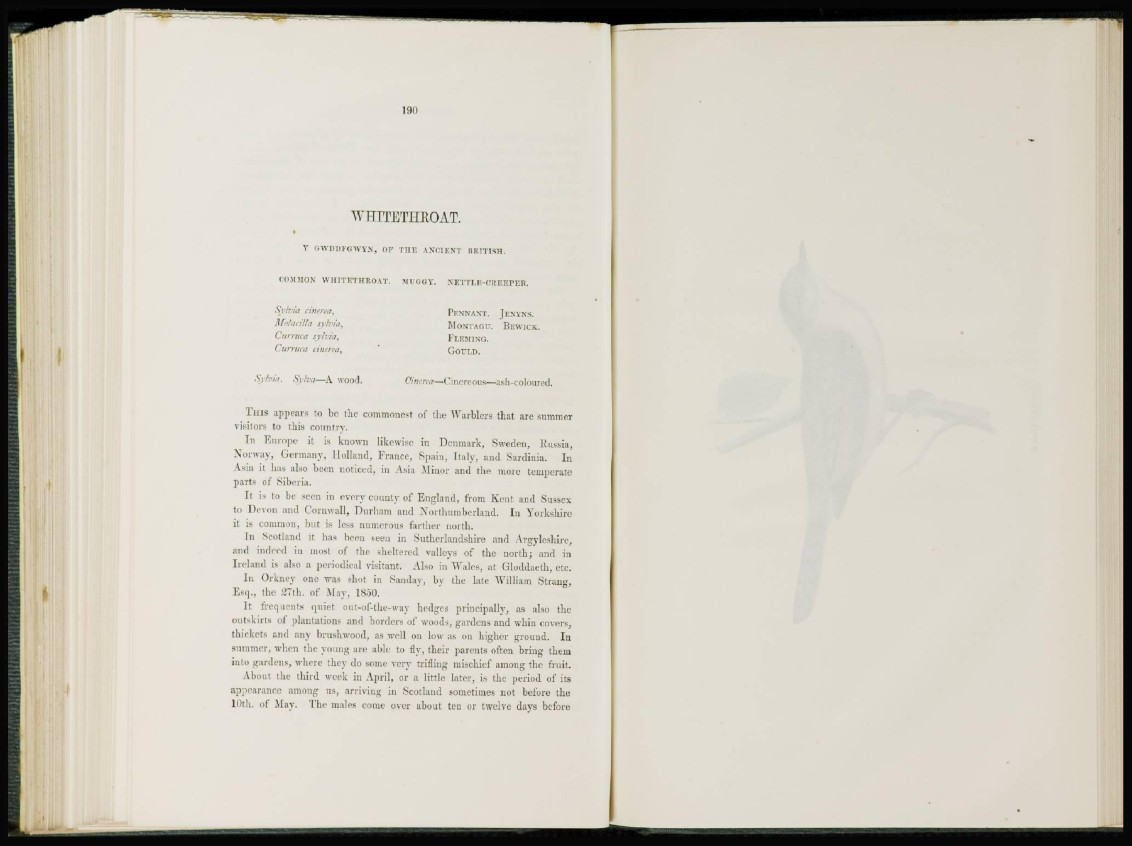
WHITETHROAT.
V GWDDFGWYN, OP THE ANCIENT BRITISH.
COW MON WHITETHROAT, MUGGY. NETTLE-CREEPER.
Sylvia cinerta, PENNANT. JENVNS.
Mofacilla sylvia, MONTAGU. BEWICK.
Cnrruca sytvia, FLEMING.
Curruca cinen-a, GOULD.
Sylvia. Sylva—A wood. Oinerea—Cinereous—ash-rolourcd.
T H I S appears to be the commonest of the Warblers that are summer
visitors to this country.
In Europe it is known likewise in Denmark, Sweden, Russia,
Norway, Germany, Holland, France, Spain, Italy, and Sardinia. In
Asia it has also been noticed, in Asia Minor and the more temperate
parts of Siberia.
It is to be seen in every county of England, from Kent and Sussex
to Devon and Cornwall, Durham and Northumberland. In Yorkshire
it is common, but is less numerous farther north.
1 n Scotland it has been seen in Suthcrlandshire and Argylcshire,
and indeed in most of the sheltered valleys of the north; and in
Ireland is also a periodical visitant. Also in Wales, at Gloddaeth, etc.
In Orkney one was shot in Sunday, by the late William Strang,
Esq., the 87th. of May, 1850.
I t frequents quiet out-of-the-way hedges principally, as also the
outskirts of plantations and borders of woods, gardens and whin covers,
thickets and an) brushwood, as well on low as on higher ground. In
summer, when the young are able to fly. their parents often bring them
into gardens, where they do some very trilling mischief among the fruit.
About the third week in April, or a little later, is the period of its
appearance among us, arriving in Scotland sometimes not before the
10th. of May. Tin- males come over about ten or twelve days before